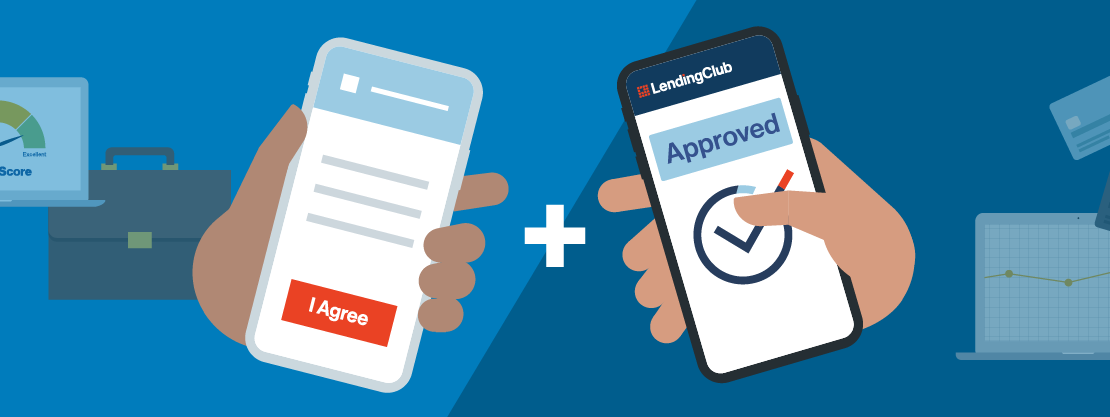Understanding the 5 Cs of Credit

When you apply for a loan or credit card, many lenders may use the 5 Cs of credit— character, capacity, collateral, capital, and conditions—to determine your eligibility and the terms of your financing agreement. The 5 Cs of credit are measures of how you handle your current credit obligations and your ability to repay a loan. Understanding how each of these factors impacts a lender’s decision-making can potentially increase your odds of getting approved and scoring more favorable rates and terms.
What Are the 5 Cs of Credit?
The 5 Cs of credit are: character, capacity, capital, collateral and conditions. The 5 Cs of credit give lenders insight into your past financial behavior to predict your future behavior. Lenders may look at these five criteria and use their findings to determine if you’re a reasonable credit risk.
1. Character
Your financial character is a lender’s evaluation of your overall credit history or how you’ve managed debt in the past. To evaluate your financial character, many lenders pull your credit report from one or all of the three major credit bureaus: Experian, Equifax and TransUnion.
When reviewing your credit history, lenders look for:
Payment history to see if you’ve made timely payments in the past.
Recent credit activity, such as the number of new accounts opened recently.
Defaults, like bankruptcies or accounts sent to collections.
Credit score for a snapshot of your overall credit health.
And when it comes to credit scores, the higher, the better. The higher your credit score, the lower the risk you present to the lender, as you’re more likely to repay the loan. Higher scores typically mean that you will get lower rates, which could translate into less interest paid over the life of your loan.
Tips for navigating Character:
Monitor your credit score and credit report for inaccuracies.
Bring delinquent accounts current to show a responsible current payment history.
Make future payments on time to build a track record for responsible borrowing.
2. Capacity
Capacity is about your ability to responsibly manage additional debt alongside your current obligations. To determine your capacity, lenders review your income, employment history, and outstanding debts. From there, lenders calculate your debt-to-income ratio (DTI)—your total debt payments divided by your gross monthly income, expressed as a percentage—to determine your capacity.
Lenders typically have a maximum DTI they’ll allow for borrowers, often as high as 50%. However, the lower your DTI, lenders tend to view your Capacity to responsibly take on new debt more favorably.
Tips for navigating Capacity:
Keep your credit utilization below 30% to demonstrate responsible use of available credit.
Pay down existing debt to improve your DTI ratio.
If you’re thinking of changing jobs, you may want to apply for a new loan while you are still at your current job, as employment history and stable income are important factors. Keep in mind many lenders will do a final check to verify employment and income right before approval.
3. Capital
Capital is how much money you’re willing to commit to a loan. From a lender’s perspective, the more cash you have invested in a mortgage or auto loan, the less likely you will default on your payments.
Conventional mortgages typically require down payments between 3% and 20% when buying a home. With auto loans, however, lenders might not require a down payment. In those cases, you could qualify for a lower interest rate by making a down payment to demonstrate your commitment to the loan. Lenders like to see you have “skin in the game.” So while not all loans require that you put up some cash, doing so may improve your approval odds in certain situations.
Tips for navigating Capital:
Be willing to delay a major purchase until you’ve saved up for a down payment that will earn you the most favorable borrowing terms.
Research your lending options and know the down payment requirements for the loan type or lender you want to use.
Create a budget that makes saving for a down payment part of your monthly financial goals.
4. Collateral
Collateral is only relevant to certain types of loans and credit cards. When applying for a secured loan like a mortgage, auto loan or secured credit card, you’ll be required to put up collateral to get approved.
Collateral is an asset (or amount of money) you agree to give up to the lender if you default on your loan. Some common types of collateral include:
Secured credit cards, secured by a cash deposit equal to a portion of your credit limit.
Mortgages, secured by the home you’re buying or refinancing.
Auto loans, secured by the car you’re buying or refinancing.
When you apply for a secured loan, the lender will assess the collateral’s value, minus any debt that already uses that asset as collateral. If the asset is worth less than the amount you want to borrow, you may be declined or required to pay a higher interest rate or other fees.
Tips for navigating Collateral:
Get an appraisal to ensure a property’s purchase price is at its appraised value.
Determine the market value of your trade-in and the car you want to buy before applying for auto loan financing.
Review a secured credit card’s terms to understand the cash you’ll need as collateral for card approval.
5. Conditions
Conditions refer to economic factors like the economy, why you need the loan and how you’ll use the money. Of all the 5 Cs of credit, Conditions is the one you have the least control over.
For example, you may be asked how you plan to use the loan funds. Some lenders may even restrict how you can use your loan proceeds.
Conditions can also refer to the market environment in which the loan is being made. During an economic downturn, for instance, lenders may tighten their underwriting guidelines, making it more challenging to get approved for a personal loan, mortgage, or credit card. Market interest rates, industry trends and other economic factors are all relevant.
Tips for navigating Conditions:
If applying for credit during an economic downturn, use the other four Cs to improve your chances for approval.
Research current interest rates for insights on rates you can expect for a specific type of loan before applying for credit.
Which of the 5 Cs Is the Most Important?
Unfortunately,no single C stands out to lenders as the most important. Depending on factors like loan type and current economic conditions, different lenders may weigh each of the Cs differently.
For example, when applying for a secured credit card, your Collateral may be more important to a card issuer than your Character because they could keep your cash if you failed to make your payment.
On the other hand, an auto lender might place equal importance on your Character, Capital,
and Collateral (the car you’re financing). Here, the lender knows they could repossess the car if you don’t pay, and use the other Character and Capital to determine your loan’s interest rate.
Knowing a lender’s qualification criteria (such as for a personal loan) can help you focus on the Cs most relevant to your situation.
The Bottom Line
Now that you know more about the 5 Cs—Character, Collateral, Capital, Capacity—and why they matter, you can use them to your advantage to improve your borrowing experience anytime you need to apply for credit.
Here are a few final takeaways for understanding and navigating the 5 Cs of Credit:
Control what you can.While you can’t control the economy, you can pay down your existing debt and keep your payments current.
Research lenders.Compare multiple lenders to ensure you’re getting the best rates and terms for where your 5 Cs are today.
Keep emotions in check.While you might want to make a purchase today, consider how you could decrease costs by improving your credit or saving a larger down payment.
You May Also Like












